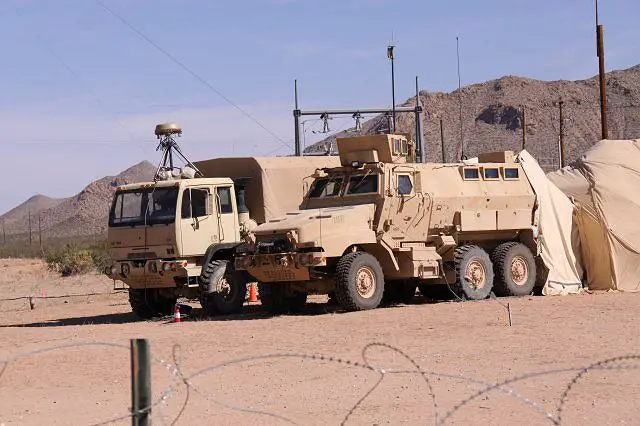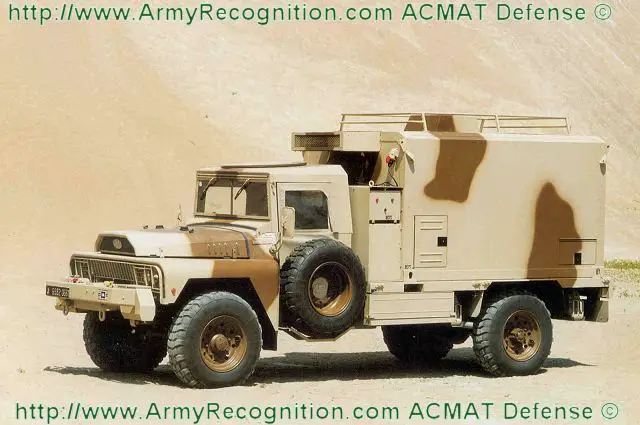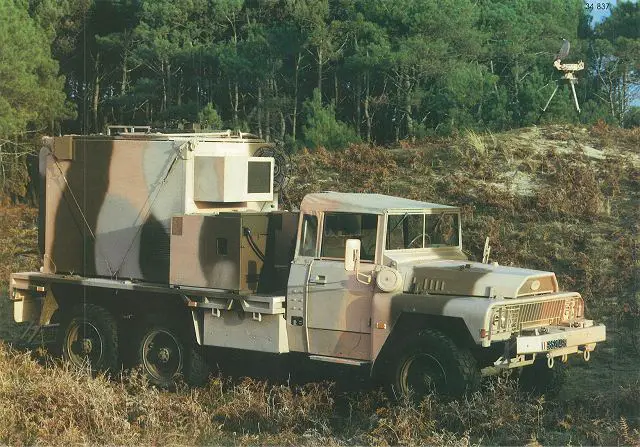Command post and communication ACMAT vehicles for the modern battlefield 1504122
| a | |||
Communication and command post for the battlefield |
|||
| Sunday, April 15, 2012, 09:48 PM | |||
| Command post and communication ACMAT vehicles for the modern battlefield. | |||
| Combat units on the battlefield must have vehicles capable of transporting personnel in charge of the command and the management of forces on the battlefield. Commanding officers are assisted in executing these tasks by specialized staff officers and enlisted personnel. These military staffs are a group of officers and enlisted personnel that provide a bi-directional flow of information between a commanding officer and subordinate military units. (By Alain Servaes Chief Editor Army Recognition) |
|||
 Caiman command post/communication armoured vehicle of U.S.Army |
|||
In
military organization, the command and control is called C2I (Command,
Control & Intelligence), which exercise of authority and direction
by a properly designated commander over assigned and attached forces in
the accomplishment of the mission. Command and control functions are performed
through an arrangement of personnel, equipment, communications, facilities,
and procedures employed by a commander in planning, directing, coordinating,
and controlling forces and operations in the accomplishment of the mission.
All these actions are often conducted simultaneously during the movement
of troops into the battlefield. Modern army must have specifically equipped
vehicles designed to provide company commanders with an on-the-move command
and control capability. Stocked with communications gear and battle management
systems, the vehicles are part of an effort to enhance smaller units’
situational awareness and access to battlefield intelligence data. In recent years, we saw the development of a new military technology connected with the command post and communication systems, the C4ISR (command, control, communications, computers, intelligence, surveillance, and reconnaissance). C4I systems have traditionally been viewed as the combination of communications, warning, intelligence, command, and information systems with computer network and radio equipment necessary for military decision making and force management. The latest generation of command post vehicles is equipped with a range of systems and applications, such as the Command Post of the Future, Forward Observing System and Tactical Ground Reporting system. |
|||
There
are two categories of Command Post and Communication vehicles uses by
modern armed forces: wheeled / tracked armoured, and light tactical vehicles
such as trucks and jeeps. For the past 60 years, the French Defence Company
ACMAT provides armed forces all over the world with it's light tactical
multi-role vehicle VLRA
TPK.
The VLRA
TPK has the capability to be easily adapted and converted
into a command post or communication vehicle by the adding a shelter
to the rear part of the chassis. The shelter offers high internal volume
which can accommodate a command team and all the equipment for communication
and control. The VLRA
TPK is available in 4x4 and 6x6 chassis. The flat rear
platform of VLRA
TPK measures 4.01 x 2 m with twistlocks for carrying heavy
shelter or generator, with a payload from 2,500 - 3,000 kg. With the
use of the standard VLRA TPK chassis, the command post and communication
vehicle maintains the same level of mobility in all-terrain conditions. |
|||
In 2010, ACMAT has
launched a new light tactical vehicle at the Defence Exhibition Eurosatory
in Paris. The new VLRA
TDN-TDE, heir of 60 years of experience in driving Forces
in the most challenging terrain, integrates up-to-date technologies.
The VLRA TDN-TDE is proposed in two version of shelter carrier 3,500
or 4,500 kg vehicle. With an increased payload, the VLRA
TDN-TDE meets the needs of current mobile command post
and communication vehicle which carries more large and heavy equipment
relative to C4I. A lighter vehicle
can also be found in the ACMAT range: the ALTV.
This vehicles is available as a two-seater single cab or four-seater
double cab, the rear part of the vehicle can be accommodated as cargo
area. Air transportable and suitable for parachuting, this highly mobile
off-roader combines a payload of up to 1.4t with the capability to provide
ballistic and mine protection. |
|||




























